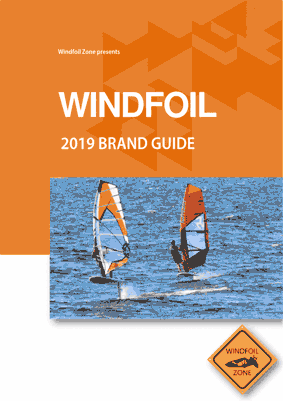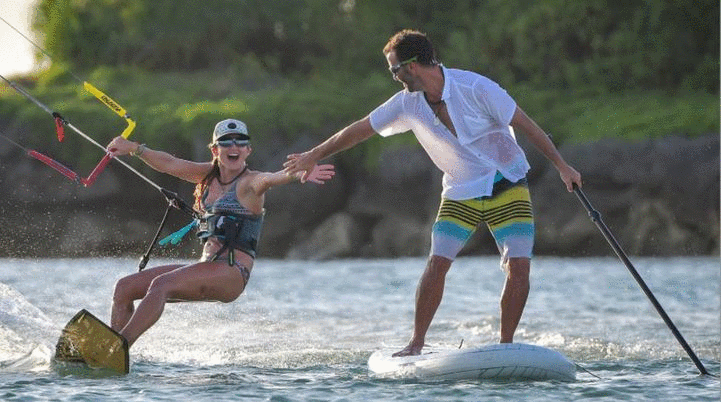WINDFOILING, THE PERFECT WINTER SPORT
- Romain
- Dec 12, 2017
- 7 min read
THE BEST TIPS TO ENJOY FRESH WINDFOILING SESSIONS (also applicable for windsurfing of course…)
There’s no doubt about it, winter is definitely here in the northern hemisphere. While I love snowboarding and snow kiting, I prefer windsurfing and even more windfoiling.
Windsurfing in rough conditions in winter, with strong winds and cold water, is a freezing experience and the reason why most windsurfers stop the sailing season when temperatures start going below 10 degrees C (50 degrees F).
Balz Müller is not afraid of cold weather!
WINTER IS HERE, GRAB YOUR FOIL !
Fortunately, windfoiling offers brand new possibilities to have fun in winter time for three reasons:
The great advantage of windfoiling is that you don’t need that much wind in order to have fun, and the experienced temperature is then less extreme than if you were sailing in strong winds.
As you ride a large and stable board, you can easily up haul the sail and the time in the water is limited.
If you are not a complete beginner, you will rarely fall into the water and you may even stay more or less dry for the whole session. In winter, the length of your session depends on how many falls you took! If you keep falling in the water, your session will be short, if you stay dry, you can keep sailing for a really long time without feeling the cold.

Windfoiling on a cold November day with a Ocean Rodeo drysuit, hoodie and gloves
While living in Norway, I’ve gained a lot of experience with sailing in cold climates, , and I want to share with you all my tips on how to keep warm and still be able to have a great time out there on the water - even when air and water temperatures get close to 0 C (32F).
To start with, here are some tips on how to have a enjoyable winterfoiling session:
Try not to fall…
In autumn, you can get really cold days, but water still remain relatively warm. However, it’s the complete opposite in the spring: nice weather but freezing water temperatures. Basically, that means that you might as well keep enjoying your summer season as it creeps into the fall, rather than start too early in the year.
Get used to the cold: try to make regular sessions in the autumn and that way you will get used to the cold temperatures gradually. Otherwise, your body won’t adapt if you try very cold temperatures at once.
Do not fall…
You need to be in good physical shape, go out for a session when you feel good, when you aren’t too tired and not hungover…
Eat well before going out and eat regularly during the session. Carbs are perfect! A hot drink can also be very nice during your breaks.
Share your session with a buddy, for obvious safety reasons.
Stop the session before night fall, which gets earlier and earlier in the winter. If not, you may have to pack up all your gear with the help of your car lights…
Don’t forget - do not fall…

Winter windsurfing session
THE RIGHT EQUIPMENT FOR WINDSURFING IN THE WINTER
In any case, winter is winter, and you need the right equipment if you want to windfoil during winter, both for comfort and safety reasons. My first choice is usually Neilpryde or Mystic neoprene gear, as these brands are renown for their quality products, but there are many other good brands on the market.
To help you out in finding winter equipment, I have chosen examples from Amazon, but your local surf shop may also have a similar solutions.
It’s all in the head
First things first, to keep warm you need to keep your extremities warm, and in particular, your head. Most of the body warmth disappears through the head, because the environment cools the hot blood flowing from your warm body as it passes through the scalp. And this blood then travels back down to the warm body, cooling it as it goes. Keeping your head warm will help your body regulate your core temperature and will help you keep your body warm.
I use a Ocean Rodeo Dawn Patrol neoprene beanie to cover my head in the fall:
When the temperature creeps under 10 degrees Celsius (50 degrees Fahrenheit), I use an integral neoprene hood. This is the most important accessory to make sure you keep your body warm during your entire session.
This neoprene hood from GUL is very comfortable with a soft lining inside the hood to avoid irritation. It's a 3 mm neoprene hood with a lot of flex at a very affordable price, despite the high quality:
On top of the hoodie or beanie, I always wear my helmet as well. Protec helmet is light and robust and is ideal in rough conditions. Click on the pictures for more details.
The hands
Hands have always been a dilemma for windsurfers, as integral gloves are warm but can make it difficult to securely hold the boom. We have envied kitesurfers for a long time, as their low bar pressure enabled them to wear integral gloves without any problem.
One solution is to wear gloves or mittens with open palms. However, they aren’t as warm as integral gloves, and can be too cold. When windfoiling, this is completely different story: the pressure on the sail is so low that some even foil without a harness. Just like our kitesurfer friends, it’s now possible to wear integral gloves without having any issues with holding onto the boom.
I personally have both integral gloves and Mystic mittens with open palms, but I prefer my Mystic mittens and use them as much as possible. If it's not too cold, I only have the thumb in the glove and the other fingers free, but with the mitten protecting the hand from the wind. I rarely put on my integral gloves, this is only when temperatures are getting closer to freezing point.
The feet
Thick neoprene high cut booties are perfect. When windfoiling, your feet are much less in contact with water than when windsurfing, so you don’t really get time to feel the cold on your toes.
I usually choose my booties one size larger than my normal shoe size, so I can wear a wool sock inside. Why wool socks? The great advantage of wool is that it still keeps you warm even when it is wet (as opposed to cotton).

The body
There are several philosophies for what to wear on your body: Thick neoprene wetsuit (up to 7 mm) or drysuit. Thick neoprene has been the standard cold-water outfit for ages.
However, modern drysuits for water sports have already been launched a few years ago. While a wetsuit is designed to keep you warm, a drysuit is only designed to prevent water from entering with latex seals at the wrists, legs, and neck. You then need to wear regular clothes underneath the suit, and adjust the amount of clothes according to the weather conditions.
Ocean Rodeo has been one of the first brands that launched drysuits for windsurfing and kitesurfing. I tried one of them 5 years ago and I have never gone back to wearing a wetsuit. It’s so comfortable and convenient that I even use my drysuit during the summer months, I just wear thin technical underwear instead.
Here are the key advantages that I see in wearing a drysuit:
Easy on – easy off.
Very comfortable: It feels like wearing pyjamas, giving you complete freedom of movements.
Easily adjust the warmth: Simply add or take off layers of clothing under the suit.
Easy maintenance: Rinse the zipper and apply talcum on the latex seals.
Quick dry: Never again having to put a cold and humid wetsuit on when you sail 2 days in a row!
Dry and warm body when taking off the suit after your cold session.
Resistance: The garment used is very resistant and probably a good protection in case you hit the foil (I have not tested though and will preferably not…)
Safety: When putting on the drysuit, you need to press out any remaining air inside the suit. There is however always some air left, which provides extra buoyancy when you are in the water.
You don’t have to pee in your drysuit to keep you warm…

Windfoiling in the winter
Now that we have talked about the pros, here are a few cons to think about before buying a drysuit:
You need to put on the “right” clothes underneath: choose technical underwear, wool, fleece or other materials, which don’t get wet when sweating. If you use cotton for example, it will get humid due to the sweat and you will feel cold.
Regular maintenance is easy, however the latex seals may have to be replaced from time to time. I have changed them myself once after 5 years. You can do it yourself, or ask a scuba diving shop to do it for you.
Swimming with a drysuit is not as easy as with a wetsuit.
The price of a drysuit is usually higher than a wetsuit, but I believe that a drysuit will last longer, and the “cost per wear” is probably fairly the same or even lower if you use it throughout the whole year like me.
To pee in your drysuit is of course not an option! Plan ahead or take it off…
Do not forget to wear an impact vest!
I hope these words will have convinced you to give winter windsurfing another try, preferably on a windfoil. Winter windfoiling is yet another advantage of the sport: you probably knew that you can increase dramatically the number of windsurfing days thanks to a windfoil, but maybe not that you can also prolong the windsurfing season considerably, as windfoiling sessions are not at all as cold as you first thought.
Enjoy your winter sessions!
And don’t hesitate to send us pictures of your winter experiences.
We would be happy to share them on this page or on social media.














Comments